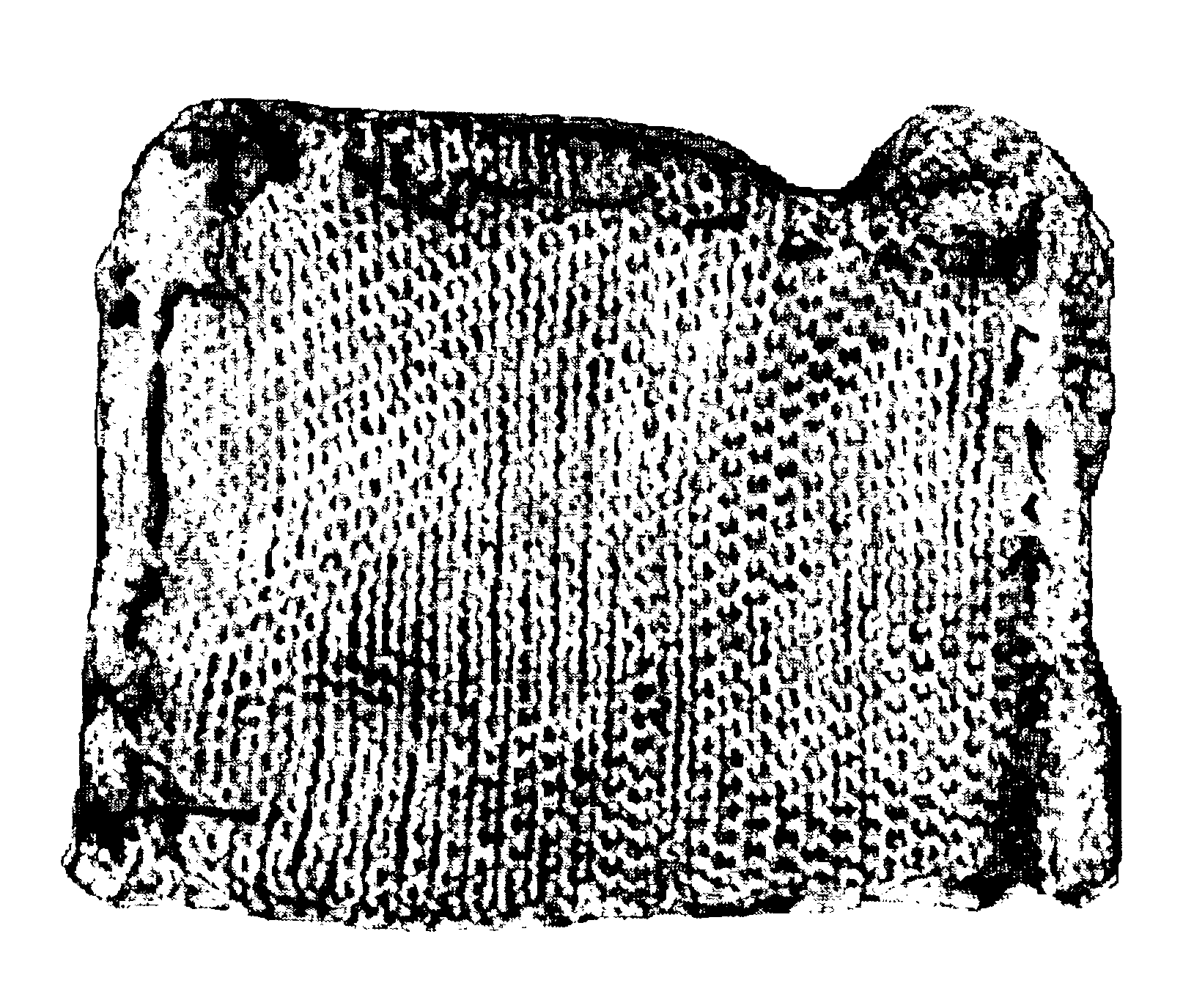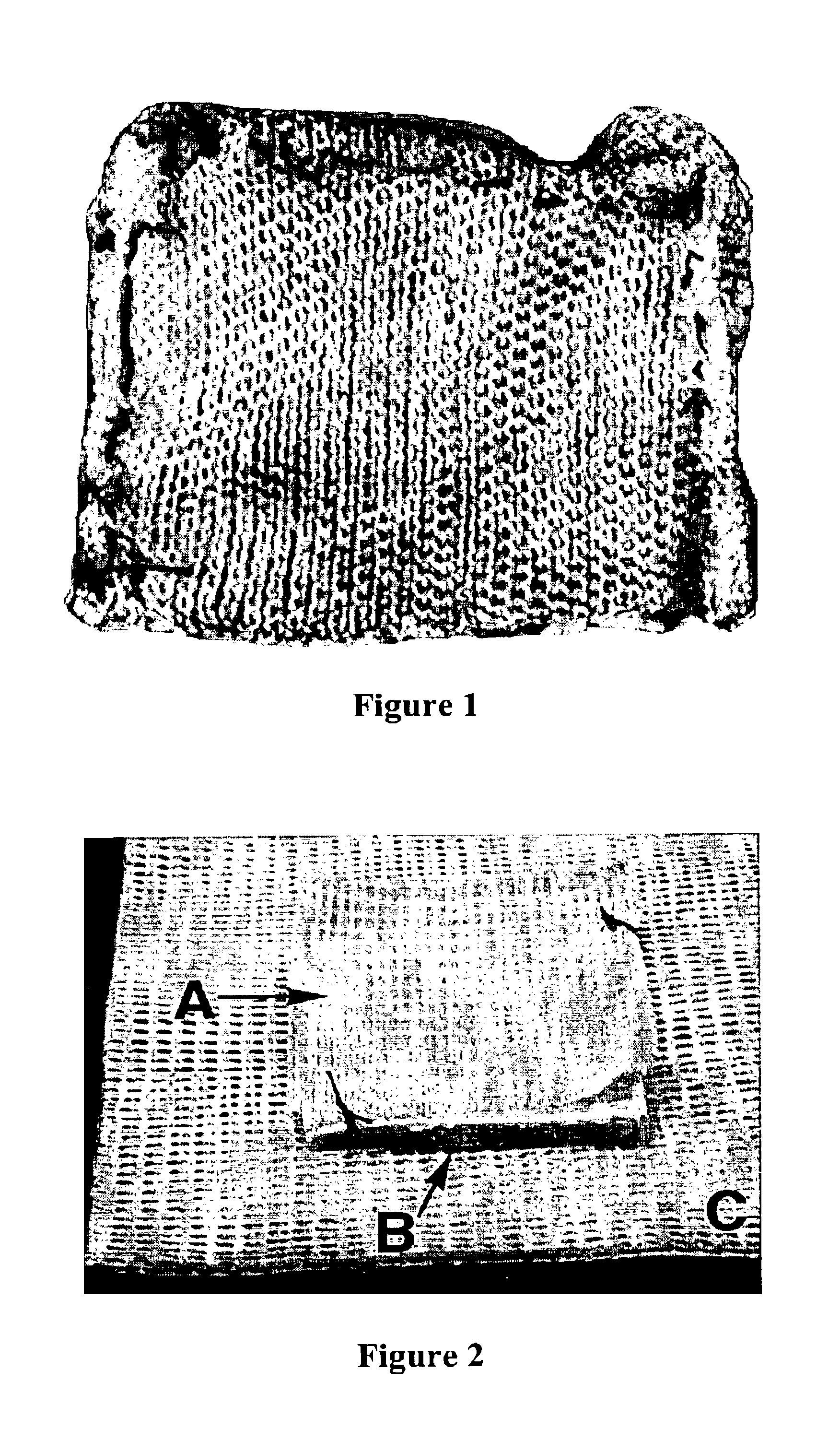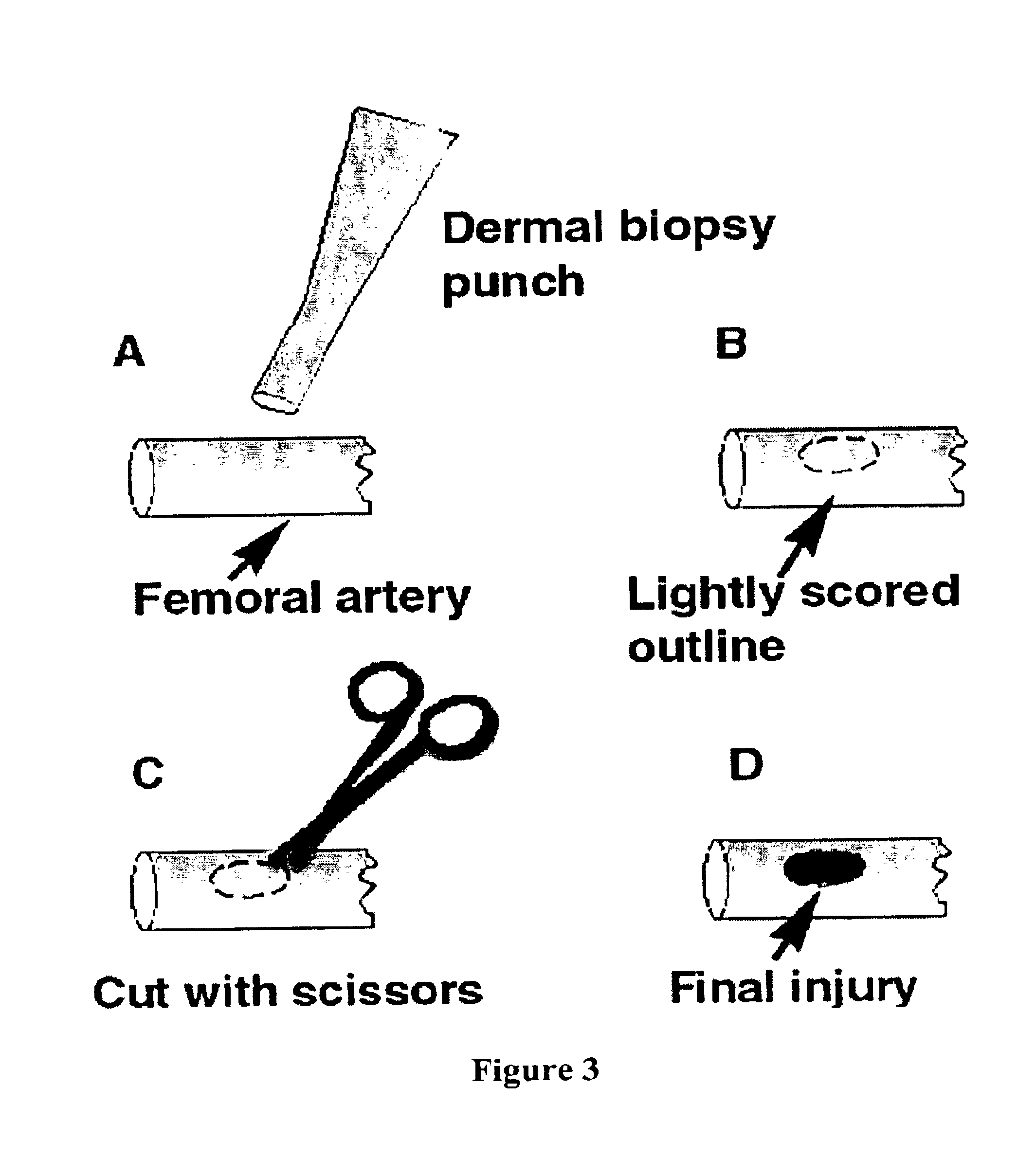Fibrinogen bandages and arterial bleeding models and methods of making and using thereof
a technology of fibrinogen bandages and models, applied in the field of fibrinogen bandages and arterial bleeding models, can solve the problems of fibrinogen bandages suffering from many drawbacks, more expensive bandages, and the component that makes fibrinogen bandages too expensive for commercial use, so as to increase the amount or rate of clot formation, and increase the blood platelet count
- Summary
- Abstract
- Description
- Claims
- Application Information
AI Technical Summary
Benefits of technology
Problems solved by technology
Method used
Image
Examples
example 1
Preparation of Fibrinogen Bandages
[0055]0.5 mg of propyl gallate was weighed and layered over the active surface of the fibrinogen bandage. See FIG. 1. In the first set of fibrinogen+propyl gallate bandage preparations, the propyl gallate was loosely sprinkled on the surface of the fibrinogen bandage. In the second set of fibrinogen+propyl gallate bandage preparations, the propyl gallate was placed in a small gauze-like pouch of surgical cellulose stitched to fibrinogen bandage. See FIG. 1. The control bandage did not have any propyl gallate. The fibrinogen bandage preparations were weighed, recorded, and placed on pre-weighed gauze. The gauze, not the bandage, was handled so as to avoid disturbing the prepared bandage.
example 2
[0056]Animals used in the study were weighed and examined by a veterinarian and underwent about an 8 to about a 12 hour food restriction prior to surgery. On the day of the experiment, anesthesia was initiated with about 0.5 mg / kg IM Acepromazine sedative and about 0.4 mg / kg, IM atropine, followed by about 2 to about 4.4 mg / kg Telazol® (Tiletamine-Zolazepam) and about 2 to about 4.4 mg / kg Xylazine IM. The animals were intubated and placed on an automatic ventilator at settings of end tidal PCO2 of about 40 mmHg. Anesthesia was maintained with about 1.5 to about 1.8% isoflurane in 100% oxygen. Pulse oximetry, EtCO2, EKG / BP and temperature (rectal) were monitored throughout the surgery. An arterial catheter was placed for blood pressure monitoring and for collection of arterial blood for blood gases and for coagulation tests. A venous catheter was placed for administration of resuscitation fluids.
[0057]The femoral artery was isolated and umbilical ties were placed p...
example 3
Assay for Changes in Coagulation Parameters and Platelet Counts During Arterial Bleeding
[0065]To determine if the rapid hemorrhage was depleting coagulation factors and lowering platelet counts, fibrinogen levels were measured and the activated partial thromboplastin time (aPTT) and prothrombin time (PT) were determined. To compare changes in parameters between bandage conditions and to eliminate inter-animal variation, platelet counts, aPTT and PT were measured in blood samples taken at the start and end of each experiment and a score was calculated as a percent of the t0 value.
[0066]It was found that the platelet counts decreased over the course of the bleeding period. The control, fibrinogen bandage alone, exhibited a platelet value of 71.9%±3.0% and the fibrinogen+propyl gallate bandage value was 86.1%±1.8%. Thus, the control value for the control was significantly lower than the fibrinogen+propyl gallate bandage (control vs. PG, p=0.07, n=4).
[0067]Similarly, the plasma concentr...
PUM
| Property | Measurement | Unit |
|---|---|---|
| Density | aaaaa | aaaaa |
| Fraction | aaaaa | aaaaa |
| Fraction | aaaaa | aaaaa |
Abstract
Description
Claims
Application Information
 Login to View More
Login to View More - R&D
- Intellectual Property
- Life Sciences
- Materials
- Tech Scout
- Unparalleled Data Quality
- Higher Quality Content
- 60% Fewer Hallucinations
Browse by: Latest US Patents, China's latest patents, Technical Efficacy Thesaurus, Application Domain, Technology Topic, Popular Technical Reports.
© 2025 PatSnap. All rights reserved.Legal|Privacy policy|Modern Slavery Act Transparency Statement|Sitemap|About US| Contact US: help@patsnap.com



